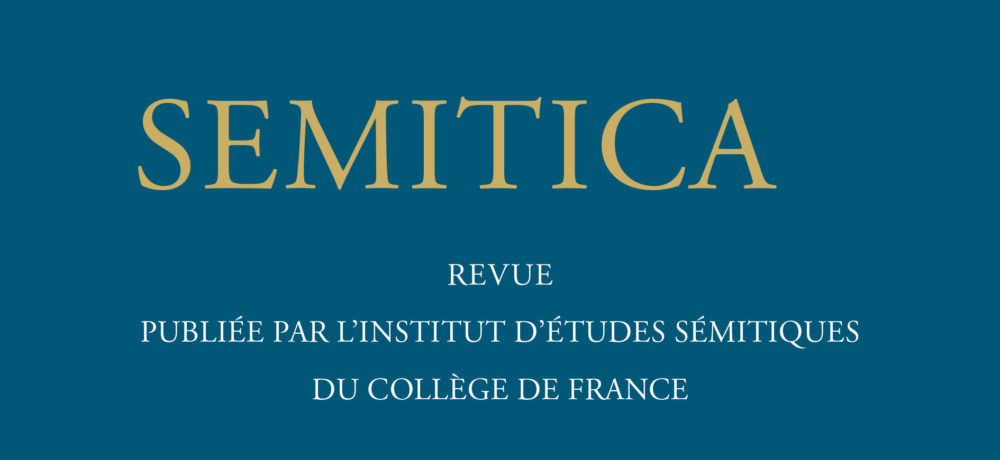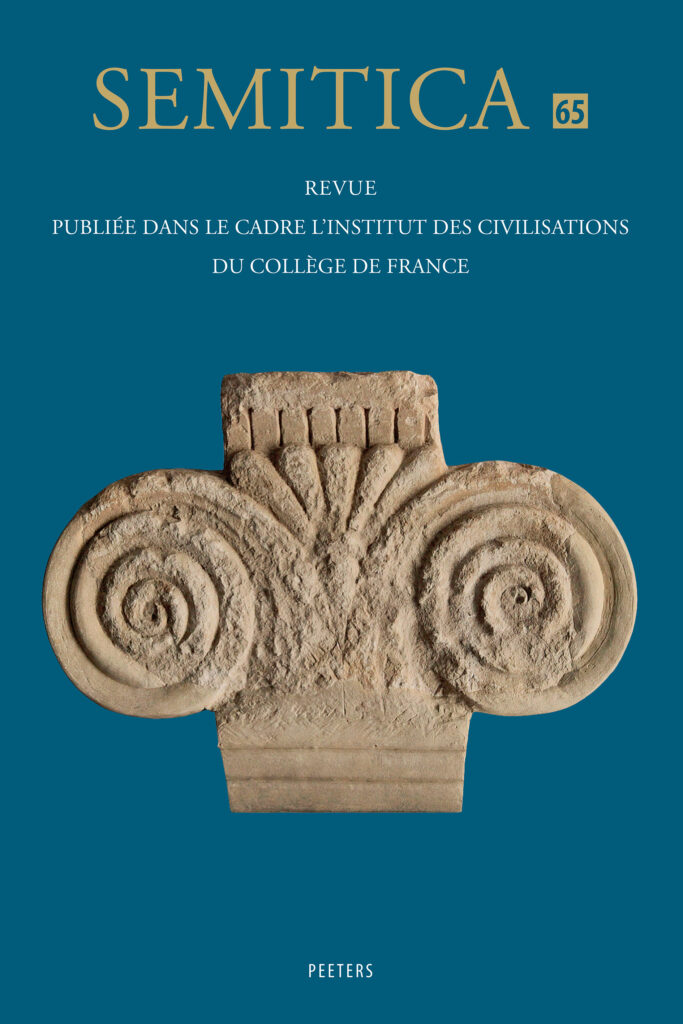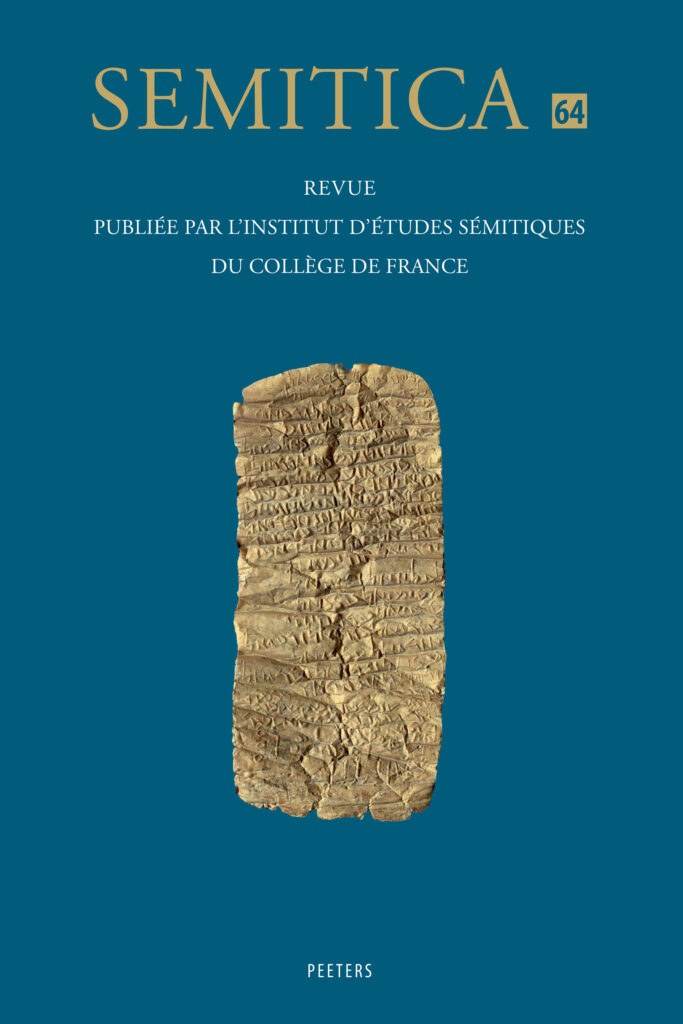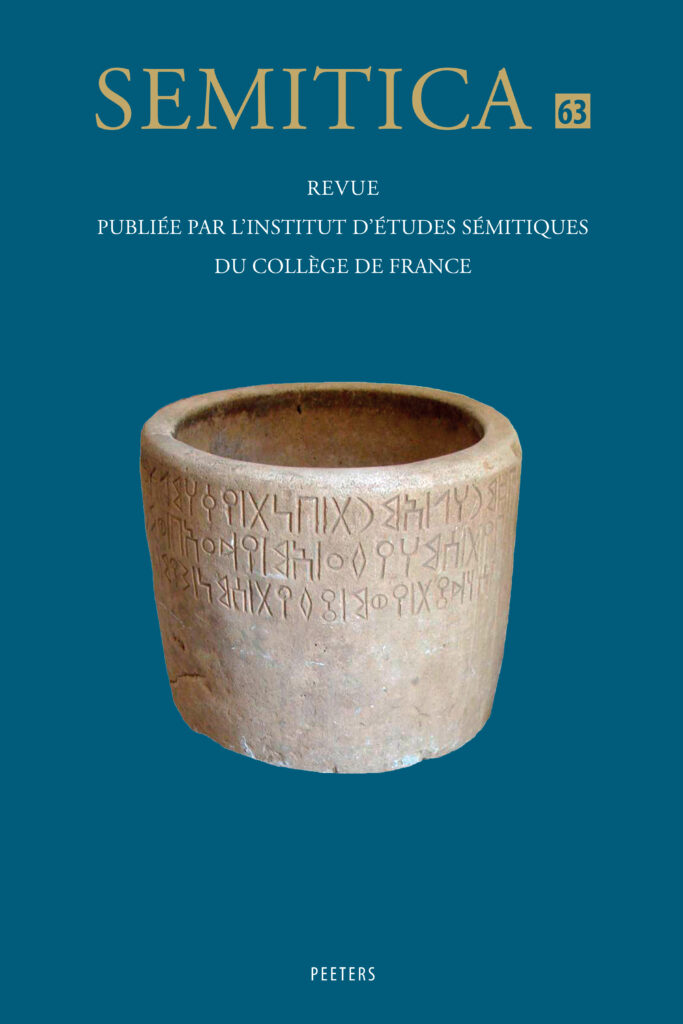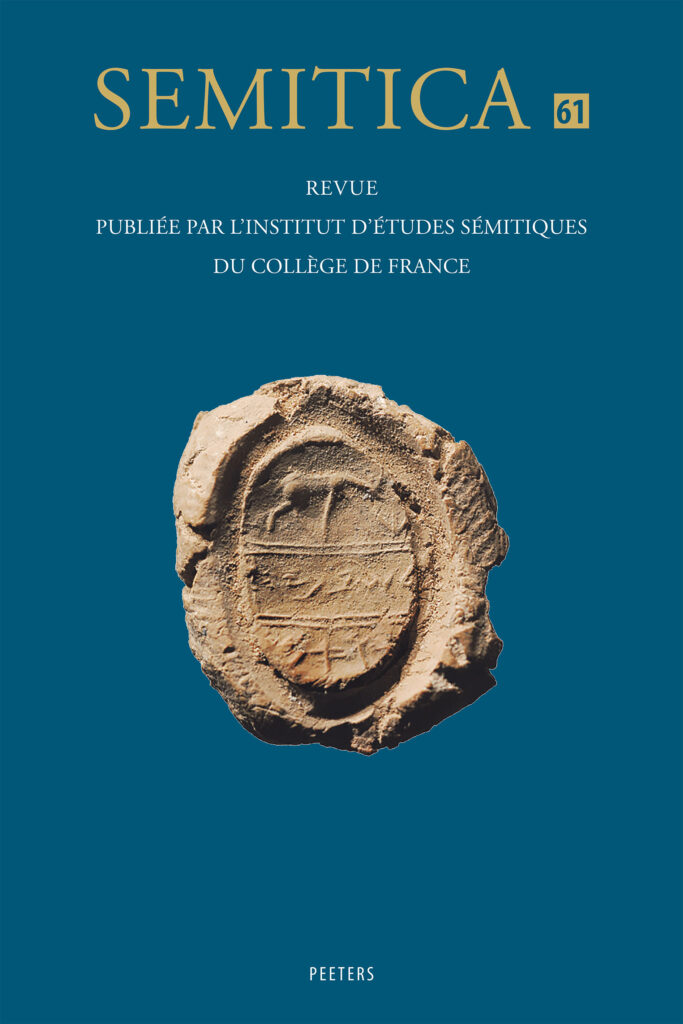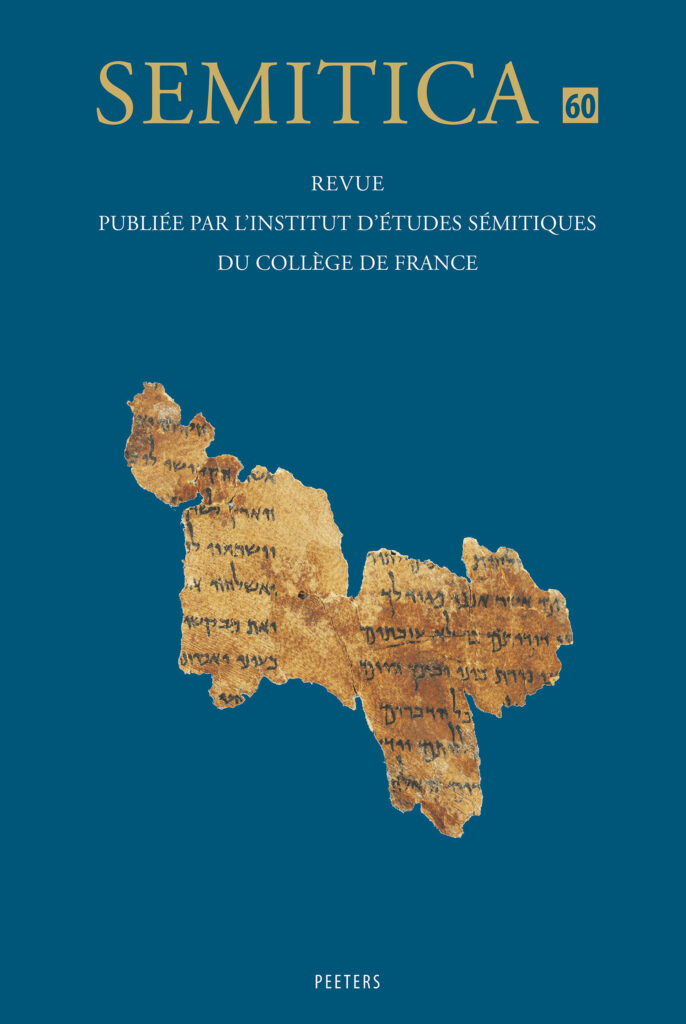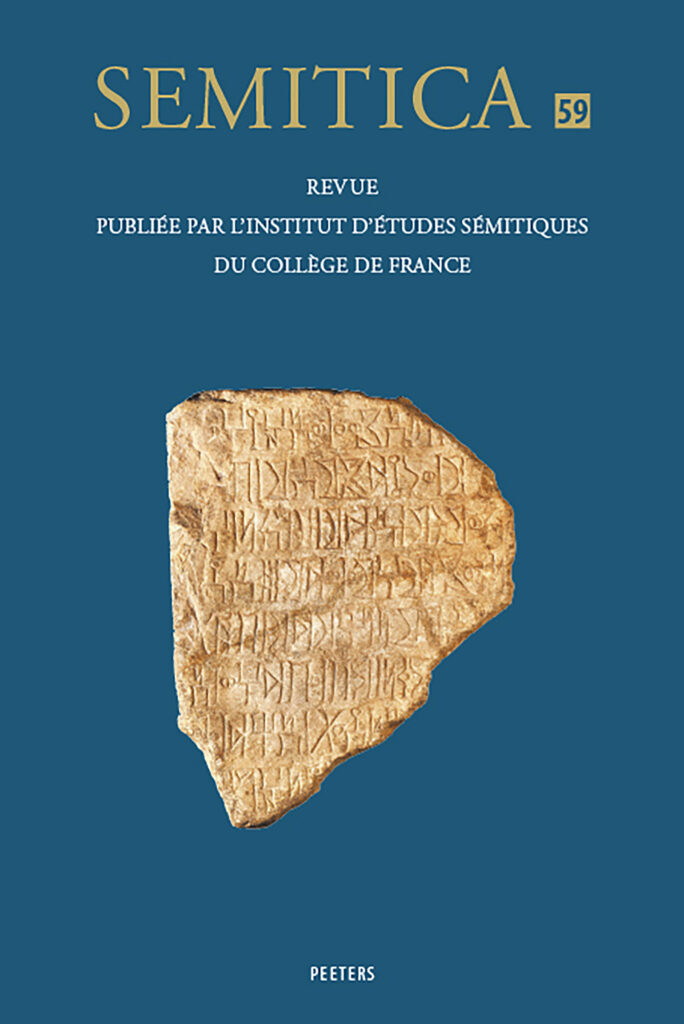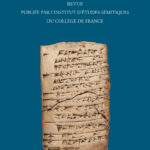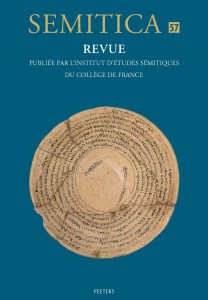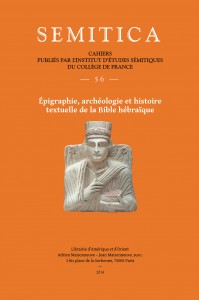Semitica 65, édité par Michael Langlois sous la direction de Thomas Römer. Leuven, Peeters, 2023. 496 p.
- Ki-Eun Jang. The Circulation of the Storm-God’s Struggle with the Death-God Motif in Ugarit and Babylonia
- Bryan Elliff – Robert Coleman. “Fasten the Bolts of Heaven”: A New Interpretation of a Difficult Line of the Deir ‘Alla Plaster Texts (I.6)
- Jürg Hutzli. Comment les scribes ont-ils modifié le texte biblique ? Particularités matérielles et épigraphiques des documents écrits découverts à Qumrân, Éléphantine et Deir ʻAlla
- Nadav Naʾaman. The Kingdom of Ishbaʿal: A Re-examination Thirty Years Later
- Sophie Ramond. Redaction Critical Reconstruction of Psalm 81
- JiSeong James Kwon. Deterministic Ideas in Ben Sira
- Jerusalem and Other Chosen Places
- Aren M. Maeir – Thomas Römer. Jerusalem and Other Chosen Places: A Short Introduction
- Eran Arie. When was the Sacred Precinct on Mount Gerizim Really Constructed? Why? and by Whom?
- Lionel Marti. Aššur: an Assyrian City or the Assyrian City
- Christian Frevel. Is it not Samaria? (Micah 1:5): Reconsidering the Centrality of Jerusalem’s Yahwism in the Iron Age
- Omer Sergi. The Nimshide Choice of Samaria: An Archaeological View of Monarchic Israel in the Iron IIA-IIB
- Ann-Kathrin Knittel. Unspectacular and Yet Special: Re-evaluating the Literary References to Shiloh within the Hebrew Bible
- Jonathan S. Greer. A “Chosen Place” Not Chosen, But Not Rejected: The Temple of Dan in Archaeology and Text
- Eckart Otto. Jerusalem and Samaria in the Final Chapters of the Pentateuch in Deuteronomy
- Magnar Kartveit. Is Mount Gerizim YHWH’s Chosen Place?
- Jeffrey R. Chadwick. Salt Lake City’s Temple Square and the Zion of the Mormon Pioneers
- Journée d’étude en l’honneur de Thomas Römer
- Jean-Daniel Macchi – Christophe Nihan. Introduction
- Konrad Schmid. L’échec de Wellhausen : le lien littéraire entre Genèse et Exode dans la recherche biblique, d’Astruc à Hupfeld
- Olivier Artus. La spécificité de Nb 26–36 dans la composition du livre des Nombres
- Ruth Ebach. Yoyaqim, « the bad king », et son fils Yoyachin dans le livre de Jérémie
- Herbert Niehr. Idéologie royale et religion en Israël à l’époque de Jéroboam II (c. 787-747 av. J.-C.)
- Israel Finkelstein. The Highlands of El, Shiloh and Merneptah’s Israel
- Philippe Borgeaud. Moïse en grec… et en chinois
